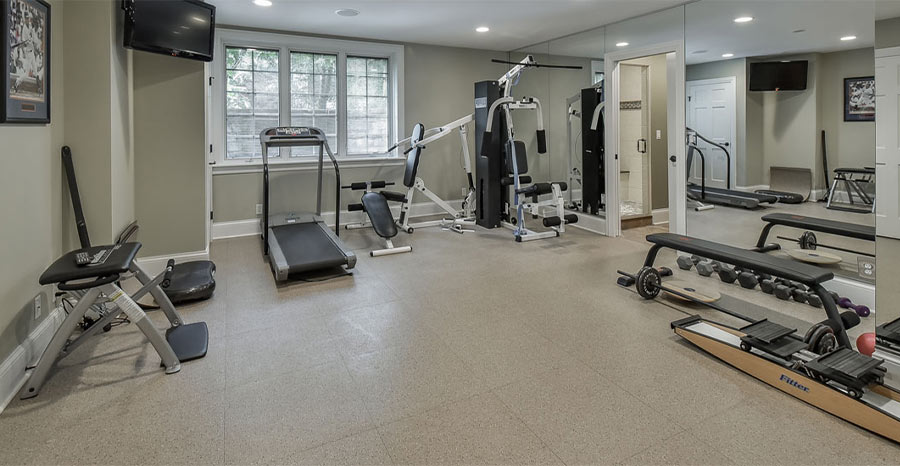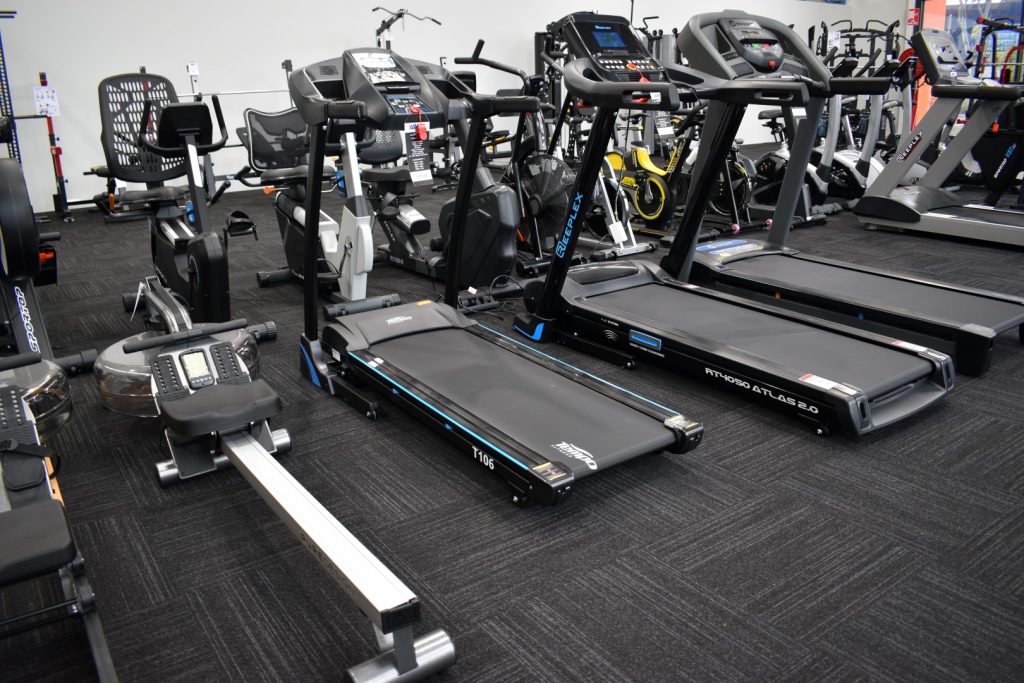
Essential Gym Machines for Home Gyms: A Complete Guide
Whether you’re a novice setting up your home gym or a seasoned fitness enthusiast, understanding your gym machine is crucial. From cardio to strength training, knowing the ins and outs of these gym machines can make or break your workout routine.
Get ready to explore the differences between various machines, learn how they target different muscle groups effectively and uncover tips for optimizing your workouts at home.
Essential Considerations for Setting Up a Home Gym
Determine Fitness Goals
Before diving into setting up your home gym, it’s crucial to determine your fitness goals. Whether you aim to build muscle, lose weight, or improve endurance, understanding your objectives will guide the equipment you need.
Knowing what you want to achieve will help you select the right gym machines and tools that align with your fitness aspirations. For instance, if strength training is a priority, investing in a power rack or set of dumbbells might be essential.
Assess Available Space
Consider the available space in your home when planning your gym layout. Measure the area where you intend to place equipment like treadmills, stationary bikes, or weight benches. Optimize corners for compact machines if space is limited.
Advantages of Having a Home Gym
Convenience and Flexibility
Having a home gym offers many benefits, primarily the convenience of working out at any time. You can exercise early in the morning, late at night, or whenever you have spare time. This flexibility allows you to integrate fitness into your daily routine seamlessly.
Setting up a home gym also means saying goodbye to commuting to a fitness center. By having workout equipment at home, you save money on gym memberships and transportation costs. Imagine the time and effort saved by not having to drive back and forth from the gym every day; it’s both efficient and cost-effective.
Privacy and Personal Space
One significant advantage of owning a home gym is the privacy it provides during workouts. You can exercise without feeling self-conscious or distracted by others around you. With no crowded spaces or waiting for machines, your workout sessions become more focused and enjoyable.
Cost Comparison: Commercial Gym vs. Home Gym
Long-Term Savings
Owning a home gym can lead to significant cost savings in the long run compared to a commercial gym membership. When you invest in your own gym machines, you eliminate recurring monthly or annual fees associated with a commercial gym.
By canceling your membership and transitioning to a home gym setup, you free yourself from continuous payments, ensuring that the initial investment in equipment pays off over time. The money saved from not renewing memberships could go towards expanding your collection of home gym machines.
Additional Expenses
Beyond just the membership fees, commuting costs are often overlooked when considering the price of using a commercial gym. Whether it’s spending on gas for driving or public transportation expenses, these additional costs add up over time and contribute to the overall expense of working out at a commercial facility.
When calculating the total cost of maintaining a regular workout routine at a commercial gym, factoring in these hidden expenses gives you an accurate comparison against investing in your own home fitness equipment.
Read Also: The Top Gym Machines You Must Have in Your Home Gym
Necessary Equipment for a Home Gym
Basic Equipment
When setting up a home gym, start with fundamental items like dumbbells, resistance bands, and an exercise mat. These versatile tools allow for a wide range of workouts, catering to various muscle groups and fitness levels. For example, dumbbells can be used for both upper and lower body exercises, while resistance bands provide adjustable resistance for strength training.
Investing in these basic pieces of equipment ensures that you have the essentials needed for effective home workouts without taking up too much space. They are usually more cost-effective than larger machines while still offering significant benefits.
-
Dumbbells
-
Resistance bands
-
Exercise mat
Cardio Machines and Strength Training Equipment
For a well-rounded workout routine at home, consider adding cardio machines such as treadmills or stationary bikes to boost your cardiovascular health. These machines simulate activities like running or cycling indoors, providing an excellent way to improve endurance.

Furthermore, incorporating strength-training equipment like weight benches or power racks allows you to focus on muscle-building effectively. Weight benches provide support during weightlifting exercises, while power racks offer safety features when lifting heavy weights alone.
Building a Home Gym on Any Budget
Starting Small
If you’re tight on cash, consider bodyweight exercises or using resistance bands. These options are affordable and effective for beginners. You can perform various exercises like squats, push-ups, and rows without spending much.
Remember to check online marketplaces or local stores for second-hand gym equipment. This way, you can save money while still getting quality gear. Look out for deals on treadmills, dumbbells, or even larger machines that fit your budget.
Gradual Expansion
When building your home gym on a budget, prioritize essential equipment initially based on your fitness goals. For instance, if strength training is your focus, invest in weights first before considering more specialized machines like a climbing pegboard.
Utilizing Various Weight Machines for Strength-Building Goals
Leg Press Machine
The leg press machine is perfect for targeting and strengthening your lower body muscles. By using this machine, you can work on your quads, hamstrings, and glutes effectively. It’s a great alternative to squats if you want to focus solely on your leg muscles.
Using the leg press machine regularly can help improve your lower body strength significantly. You can adjust the weight plates according to your fitness level and gradually increase the intensity as you progress in your workouts.
-
Pros: Targets multiple muscle groups in the legs, adjustable weight plates.
-
Cons: May not engage core muscles as much as free-weight squats.
Lat Pulldown Machine
Incorporating a lat pulldown machine into your routine will aid in developing back and upper body strength. This machine targets various muscle groups such as the latissimus dorsi, biceps, and shoulders effectively.
-
Pros: Focuses on back muscles, adjustable weights for progression.
-
Cons: Limited range of motion compared to pull-up exercises.
Chest Press Machine
The chest press machine is excellent for building and toning chest muscles. It allows you to perform controlled movements that target specific areas of the chest without worrying about balancing weights like with traditional bench presses.
-
Pros: Isolates chest muscles efficiently, suitable for beginners.
-
Cons: Less functional than free-weight bench presses.
Tailoring Training Equipment to Individual Goals in Home Gyms
Free Weights for Building Strength and Muscle Mass
Free weights like dumbbells or barbells are perfect for building overall strength and muscle mass. They engage stabilizing muscles, promoting balanced muscle development. For instance, using dumbbells for bicep curls not only targets the biceps but also engages the forearms and shoulders simultaneously.
Including free weights in your home gym routine can help you achieve a well-rounded workout that targets multiple muscle groups at once. This versatility allows you to perform compound exercises like squats, deadlifts, and bench presses effectively with just a few pieces of equipment.
Read Also: How to Maximize Your Workouts with a Home Gym Multi Station
Resistance Bands for Flexibility and Mobility
Resistance bands are excellent additions to a home gym as they offer variable resistance levels suitable for all fitness levels. These bands are ideal for improving flexibility, mobility, and performing rehabilitation exercises. For example, using resistance bands during leg lifts can add extra resistance to strengthen hip abductor muscles effectively.
Integrating resistance bands into your training regimen provides a low-impact option that is gentle on joints while still challenging your muscles. They are lightweight, portable, and inexpensive alternatives to traditional weight machines.
Closing Thoughts
You’ve got the inside scoop on setting up your home gym, weighing the pros and cons, and snagging the right gear for your fitness journey. Whether you’re a budget boss or willing to splurge, there’s a setup that fits snugly as a bug in a rug for you. Remember, it’s not just about the equipment; it’s about how you hustle with it. So, get ready to pump iron, break a sweat, and crush those goals in your personalized workout haven.
Now that you’re armed with the knowledge, go forth and conquer your fitness dreams! Your new gym machine is waiting for you to make it your sweat sanctuary. So, grab those dumbbells, hop on that treadmill, and show those weights who’s boss. Your fitness journey starts now!
